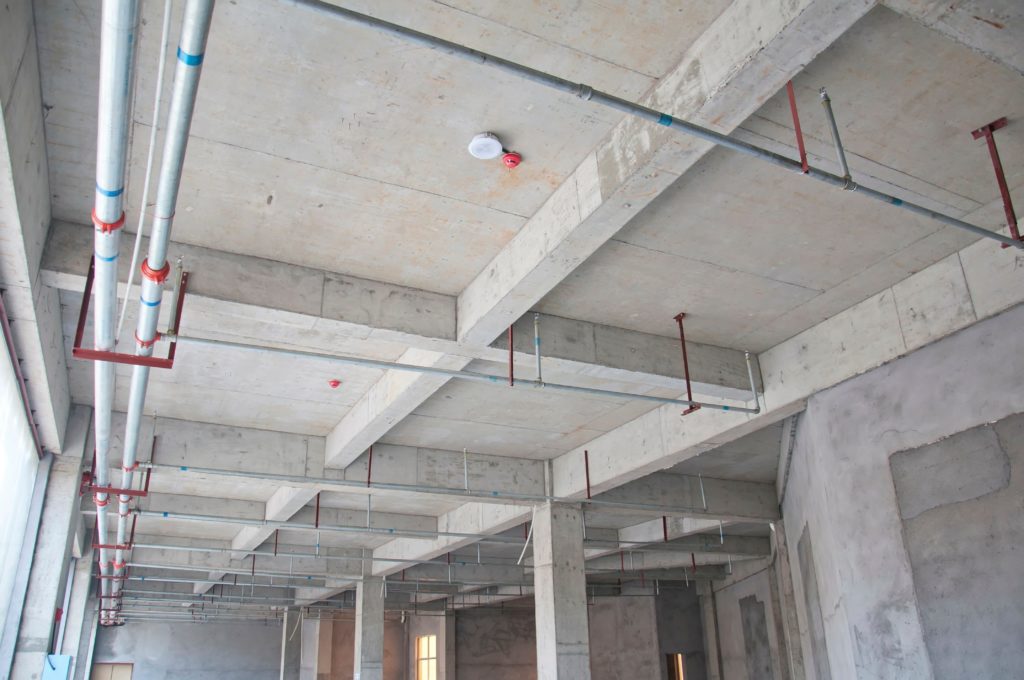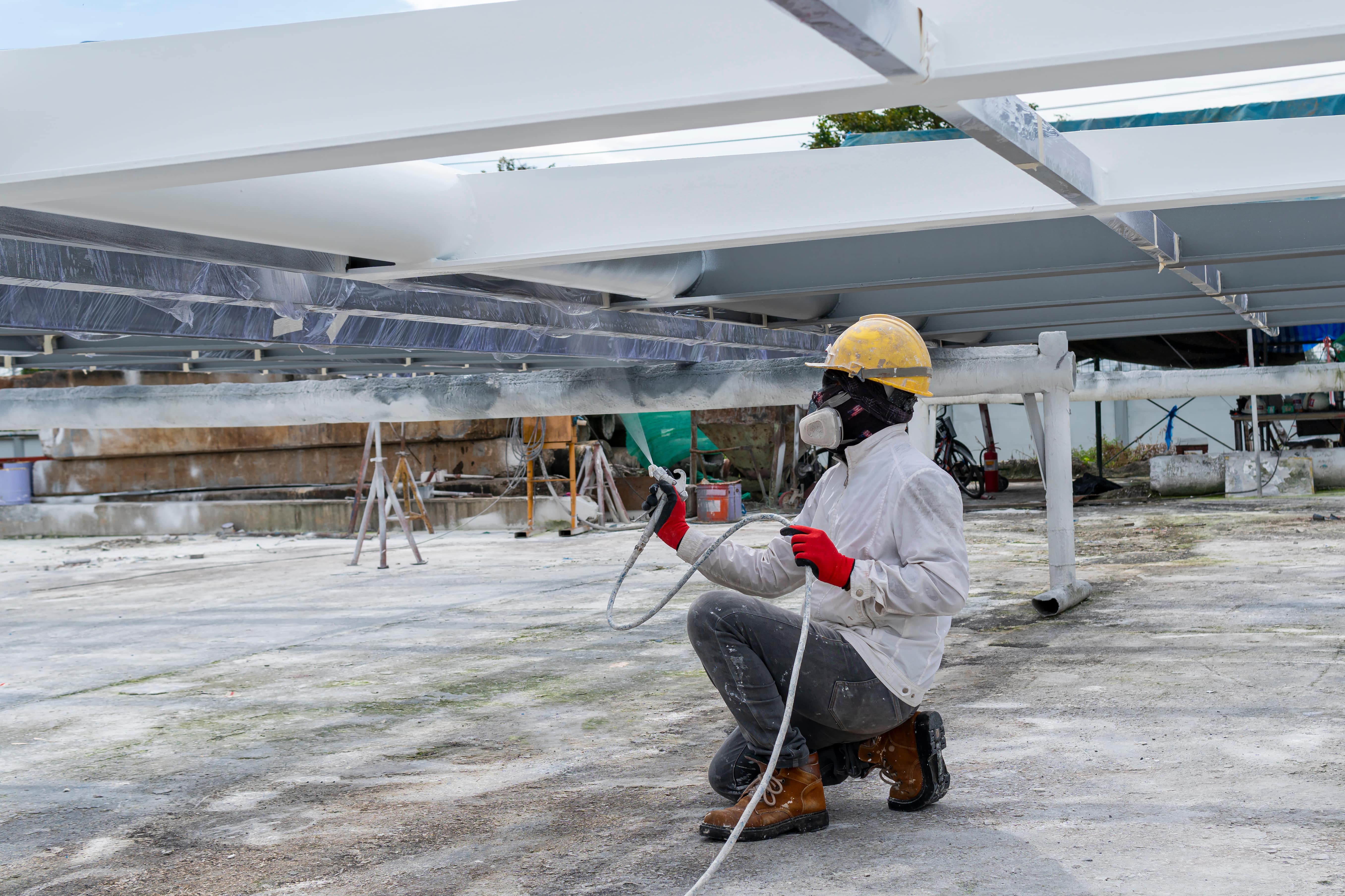Fireproofing is the process of increasing a structure’s fire resistance. It ensures that a building can remain standing long enough until the fire situation is under control.
While it’s an effective safety measure, there’s a reason why fireproofing is done only by experts. It’s challenging, requires a lot of resources, utilizes special equipment, and most importantly, it’s a matter of life and death. In other words, fireproofing a building is no joke.
Hence, if you intend to fireproof a building to ensure commercial security, you must first understand how it works. For starters, you must know why construction companies implement fireproofing in the first place.
Common Structural Materials For Fireproofing
Though there are several materials you can use for fireproofing, some are objectively better than others. For your reference, building fires often generate temperatures of 1100°C. Therefore, you want a material that can withstand temperatures close to or equal to that. Here are some of the standard materials you’ll find in a fireproofed building:
- Concrete
Surprisingly enough, concrete, one of the most common materials for just about any construction project, is fire resistant to some extent. However, unlike other materials, its fire resistance property may vary according to its composition. But in general, concrete can withstand temperatures of up to 1000°C for a whole hour.
- Steel
Though steel is known for its tensile strength, it can also withstand high temperatures.
In particular, steel is unaffected at around 300°C but may lose half of its strength when exposed to temperatures of 600°C. It only melts completely at about 1500°C.
- Bricks
One of the stages of creating brick involves exposing it to high temperatures. Hence, bricks are already inherently resistant to fire. Of course, it depends on the type of brick. Fire bricks, in particular, can withstand up to 1000°C, while masonry bricks can only withstand temperatures lower than that. Nevertheless, bricks are excellent fire-resistant materials.
- Fire-Rated Glass
It’s common knowledge that glass may shatter when exposed to low or high temperatures. However, as it is often a crucial part of building designs, you’ll find glass that doesn’t shatter easily due to fire. Particularly, fire-rated glass can withstand temperatures of up to 900°C. This type of glass is what you often see in luxury buildings.
Best Methods For Fireproofing A Building
Fireproofing is a procedure you can apply during or after the construction phase. Using the structural materials mentioned earlier is one way to fireproof during construction. However, there are also ways to fireproof an existing building. Below are some examples of such methods:
- Rigid Board Installation
This method involves installing rigid boards of varying thickness to support the building. By doing so, its structure can remain standing for long as the boards can sustain the building and prevent its collapse, at least for a while.
- Flexible Insulation Blanket Systems
This fireproofing method utilizes fire-resistant blankets to add a layer of protection to structural materials like steel. The blanket itself is designed to withstand high temperatures. By covering pillars or beams with the material, you can prolong their collapse during fire emergencies. This system is arguably the easiest fireproofing method.
- Cementitious Fireproofing
Cementitious fireproofing follows the same concept as flexible blanket systems. It involves adding a layer of coating to structural materials and, in doing so, increasing their fire resistance. Additionally, the coating is inherently fire-resistant as it’s usually made with cement or gypsum. Think of it as adding an outer layer made of concrete.
- Intumescent Fireproofing
Intumescent fireproofing is similar to cementitious fireproofing. It involves adding a layer of coating to the underlying material. However, its goal is not to completely prevent fire from reaching the underlying material, as cementitious fireproofing does. Instead, it’s designed so that when heat touches the coating, it expands or swells.

Reasons For Fireproofing A Building
Apart from its difficulty, fireproofing also costs a considerable amount of money. Nonetheless, most construction projects still involve fireproofing. Of course, this is not without reason. More specifically, there are three main reasons why fireproofing is incredibly important:
- It Ensures The Safety Of The Residents And Visitors
In a fire emergency, a few seconds can save lives, and that’s what fireproofing is all about. It allows the building to remain standing for much longer than without fireproofing. It is granted that not all fireproofing jobs will be a life-saver, but that’s why companies employ agencies for top-notch fireproofing.
- Fireproofing Can Salvage Valuable Materials And Equipment
While there are indeed cases where fire engulfed an entire building, it’s not common. In most cases, the building may only incur damage to certain parts. Fireproofing can prevent valuable materials and equipment from getting destroyed. While it does cost money, it may also keep you from unwanted expenses that may result from fire emergencies.
- It’s A Requirement From OSHA And NFPA
Healthcare practitioners follow the rules and regulations to ensure patient safety. Similarly, construction companies also follow codes and standards set by the government. Coincidentally, fireproofing is one requirement provided by the National Fire Protection Association (NFPA) and Occupational Safety and Health Administration (OSHA).
With that out of the way, you might be wondering how best to approach fireproofing. If so, you should start by looking at the materials commonly used by experts to fireproof a building.
Closing Thoughts
While it does cost money, fireproofing has numerous merits for a building. Hence, as tempting as it may be, you mustn’t spare any effort and money to fireproof a building. You may not be directly involved in the project, but having basic knowledge of the craft can come in handy. For one, you can determine the ideal material or method to fireproof your building. This guide should be plenty of help in that regard.




